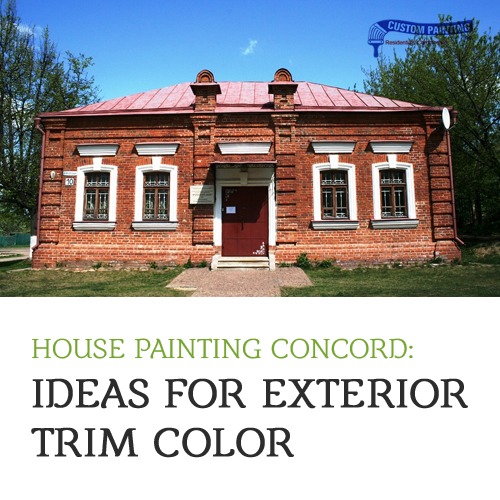House painting in Concord is an easy and effective way to bring new life to your space, with a fraction of a full-scale renovation and remodeling costs. The exterior of your home should look good as much as the interiors. In fact, some people believe the outside should look better because it is the first impression people have of you and your home.
Even painting the trims of your exterior will bring an entirely refreshed look. But since there is a wide range of paint colors, you may have problems choosing which exact colors for the trim that will complement the rest of the exterior.
If you are confused about where to begin, here are the ways to guide you to pick a good exterior trim color.
An exterior color scheme consists of the three elements:
- Field – The principal color, such as the color of the walls or the siding.
- Trim – This includes door and window trims, corner boards, and fascias.
- Accents – This includes doors, shutters and other architectural features and details.
Picking the right color for the trim (and the accents) depends on a lot of factors, but the most common factor is the field color itself. Will your choice of trim color blend well with the rest of the house? While the decision is a matter of personal preference, professionals generally depend on the color wheel.
Analogous colors – colors that are next to each other on the color wheel (such as purple and blue, although these aren’t used much in home painting)
Complementary colors – colors that are opposite to each other on the color wheel (such red and green). The word “complementary” doesn’t mean the colors complement each other, but that these colors just complete the color wheel.
Color wheels are always a fail-safe tool which will help you decide which of the colors will blend well or clash with each other.
But if you want a rather easy approach, use the classic white for the trim. White can blend well with any type of color. Whether your house is painted red, yellow, green, blue, natural wood color or other neutrals, you can never go wrong with white. White brings an interesting contrast to the color of the walls, and it helps in highlighting your home’s architectural details.
Aside from these suggestions, the size of the house is also a helpful way to determine the trim color. For instance, if your house is small but you want to make it appear bigger, paint the trim and the accents with a much lighter color. The lighter shades will blend well with the wall color.
The architectural style of the house is another thing that should be taken into account. For example, Mediterranean-inspired homes typically feature taupe, medium brown, beige, white or other sun-kissed colors or neutrals. For this, you can apply a variety of trim colors such as shades of brown, red, white and gray, depending on the overall color scheme.
You may use more than one color for the trim and the accents as you wish, but too many color choices can be a pain in the eye.
If you plan to do exterior house painting in Concord, don’t forget the color of your neighbors’ homes. You can choose to paint your home differently as you wish, but try to pick the colors that still are similar to other homes in your neighborhood, since your house is part of that landscape. If you paint your house in colors that are too vivid or harsh or a color that clashes with the other houses, it may stand out — but in the wrong way — and can potentially hurt your property’s resale value should you choose to sell it in the future.

